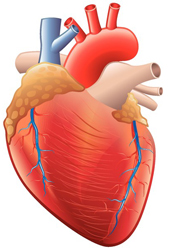Coronary artery disease (CAD) or ischemic heart disease is the most common type of heart disease found in Americans. The key risk factor for this condition is high blood pressure, rising cholesterol levels and smoking. Proper documentation via cardiology transcription is required to have a clear idea of the patient’s condition, detect the risk factors as soon as possible and provide timely treatment. With ICD-10 implementation, your clinical documentation must remain highly structured to achieve meaningful use and successful outcomes. You should abstract patient information quickly and accurately and research clinical information effectively. Let’s consider the crucial documentation elements required for each type of ischemic heart disease.
Coronary Atherosclerosis
Identify the site of coronary atherosclerosis from the following and document it.
- Native coronary artery
- Graft
- Transplanted heart
Further, you should identify the presence or absence and type of angina pectoris (document as either with angina pectoris or without angina pectoris). In addition to this, you should also identify any of the following conditions:
- Chronic total occlusion of coronary artery
- Coronary atherosclerosis due to calcified coronary lesion or lipid rich plaque
- Exposure to tobacco
Angina Pectoris
Check whether angina is related to atherosclerotic heart disease and document it if any of these conditions are found:
- Complicating atherosclerotic heart disease
- Not complicating atherosclerotic heart disease
If you find no relation with atherosclerotic heart disease, identify the type of angina and document it. The different types are:
- Unstable angina
- Angina with documented spasm
- Other forms of angina pectoris
- Unspecific angina pectoris
Myocardial Infarction
You should identify the following and document it appropriately.
Episode of care
- Initial
- Subsequent
Type of myocardial infarction
- ST elevation myocardial infarction (STEM I)
- Non-ST elevation myocardial infarction (NSTEMI)
Site initial/subsequent episode of care of STEMI/NONSTEMI
- Anterior wall
- Inferior wall
- Other sites
Any current complications of STEMI/NSTEMI within initial 28-day period must also be identified and documented.
In order to incorporate all these details quickly and effectively into your EHR, you may have to rely upon EHR transcription. This is because EHR templates limit narrative description. In the case of EHR transcription, physician recordings are transcribed by skilled and experienced transcriptionists and populated into the corresponding fields within the EHR.

